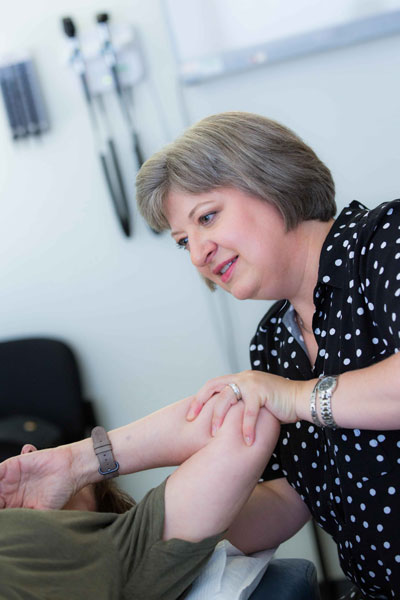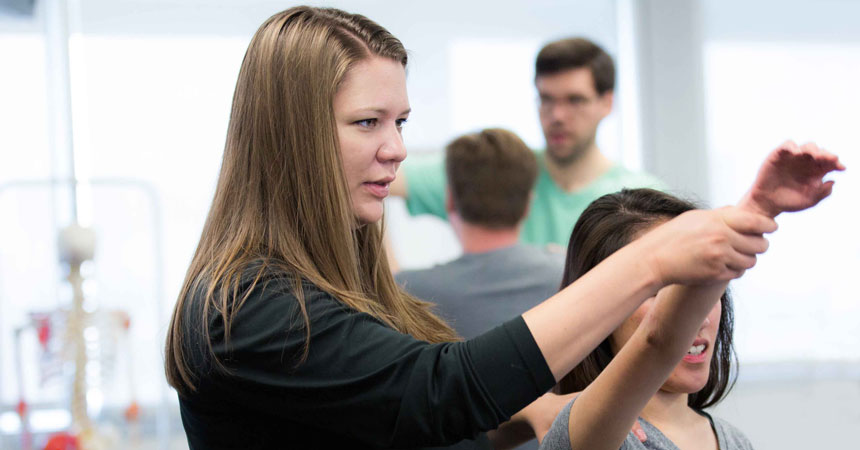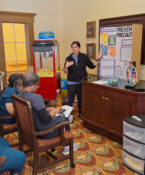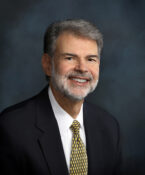The future of medicine is female
By Jan Jarvis

When Mary Ann Reed was considering a career in medicine, she kept getting a question she never expected:
“So… you’re going to be a nurse?”
Although surprised, the second-year Texas College of Osteopathic Medicine (TCOM) student did not let the remarks deter her.
Reed is part of a record-setting class of female students who entered medical school in 2017, when for the first time, more women enrolled as first-year medical students than men. Nationwide, about 12,800 women, representing 50.7 percent of new enrollees, began medical school in 2017-18, according to the Association of American Medical Colleges.
Solutions magazineRead more about UNTHSC’s people and programs in the latest issue of Solutions. |
UNT Health Science Center is part of that trend. This year, 54.3 percent of first-year students entering TCOM were women, slightly higher than the 2017-2018 enrollment of 54.1 percent females. The highest ratio was in 2011, when 57 percent of TCOM first-year students were women.
Since 2015, the number of female enrollees has grown by 9.6 percent, while the number of male enrollees has declined by 2.3 percent.
Overall, medical school classes continue to diversify. New enrollment among African-Americans rose by 12.6 percent and among Hispanics by 15.4 percent from 2015 to 2017.
Along with a change in numbers comes a shift in culture for female medical students and physicians. While challenges such as wage gaps and patient discrimination have not gone away, women are finding strength in numbers.
Through mentoring, online groups and professional organization support services, female physicians are turning to each other for help navigating the challenges.
“I’ve seen a lot of women mentoring and supporting other women,” said Kendi Hensel, DO, PhD, Associate Professor in Family and Osteopathic Manipulative Medicine.
Dr. Hensel is herself a trailblazer and leader. In 2014, she became the first woman to serve as an associate editor of The Journal of the American Osteopathic Association, the oldest journal of her profession. Earlier this year, she was named President-elect of the American Academy of Osteopathy (AAO), a national organization of about 9,000 physicians and students.
Today, many more women are leading and mentoring young female medical students and physicians, said Yein Lee, DO, Assistant Professor in Family and Osteopathic Manipulative Medicine. That’s something previous generations lacked.
“I am thankful that I am able to learn from their experiences and seek their wisdom and advice when needed,” Dr. Lee said. “As we produce more female physicians, I am optimistic that we will create more of such opportunities for medical students and female physicians in their early careers.”
Unique challenges
As a first-year TCOM student, Reed faced a challenge that her male classmates never would: She was pregnant.
During the six-week break that comes at the end of the first year of medical school, she expected to have her baby – and recover in time to start her second year and finish on schedule.
“I plan to finish just like anyone else does,” she said. “It may be a little harder emotionally and physically, but I feel like I will be able to do it.”
Deciding on a specialty can be fraught with challenges. Second-year TCOM student Melissa Schullek, for example, said she is thinking about family medicine or pediatrics, both rewarding fields that she said would leave her more time for parenthood.
Women now account for more than 60 percent of pediatricians and more than 51 percent of OB-GYNs practicing in the United States. More than 60 percent of dermatology residents are women. But only 38 percent of general surgery residents are female.
“There just aren’t that many women who are orthopedic or cardiothoracic surgeons,” Dr. Lee said. “That leaves women with fewer mentors they can look up to.”
When Dr. Lee was a resident, she said she was required to wear a color-coded nametag that identified her as a physician. Still some patients assumed she was a nurse.
“I dealt with this a lot,” Dr. Lee said. “Even though I was wearing the white coat and I had the name tag, I would still be called the nurse on a daily basis.”
It is a common problem among the 72,000 members of Facebook’s Physician Moms Group.
“I bet once a month somebody posts that they’re in an examining room with a male nurse or male residents and the patient always directs their questions to the guys,” said Dr. Hensel, who is a member.
Wage gap
At a roundtable discussion with the Tarrant County Medical Society, TCOM students learned some hard truths about the gender wage gap.
A 2016 study found male primary care physicians made 16 percent more than females. For specialists, the gap was 37 percent. Overall, female physicians earned 90 cents for every dollar that male physicians made, according to one study.
The experience made many of the group realize how much they have to learn.
Several studies have found that female physicians have better outcomes and fewer readmissions than male doctors do. A 2017 study, for example, found that elderly hospitalized patients treated by female internists had lower mortality rates than those treated by male physicians.
“Why is that not translating into career advancement?” Dr. Lee asked. “Change is coming, but at a snail’s pace.”
The gap is notable in academia. Nationwide, female physicians constitute 38 percent of faculty but only 21 percent of full professors, 15 percent of department chairs and 16 percent of deans.
“Years ago when I came here, I was the only female faculty member in OMM,” Dr. Hensel said. “Now we have four.”
Past and future
Through the late 19th century, women were largely excluded from allopathic medical schools. But it was a different story at the American School of Osteopathy, when in 1892, the first class included six women.
By 1923, half of all osteopathic medical students in the United States were female. The numbers have gone up and down since then, but stay close to 50 percent.
“Osteopathy has a history of being a lot more accepting of women in medicine,” Dr. Hensel said. “I think that is because the founder believed in being more inclusive, so they became a part of the culture and the profession.”
As time goes by, certain specialties will likely become female-dominated while others remain more male-dominated, Dr. Hensel said.
“The diversity should strengthen the specialties,” she said.
Women in medicine today have more opportunities to excel – no matter which path they choose.
“We just want to be given a shot,” Dr. Hensel said. “We want the chance to do the work, not because of our gender, but because of our ability.”



![Uyen Sa Nguyen Scaled[58]](https://www.unthsc.edu/newsroom/wp-content/uploads/sites/16/Uyen-Sa-Nguyen-scaled58-145x175.jpg)


Social media